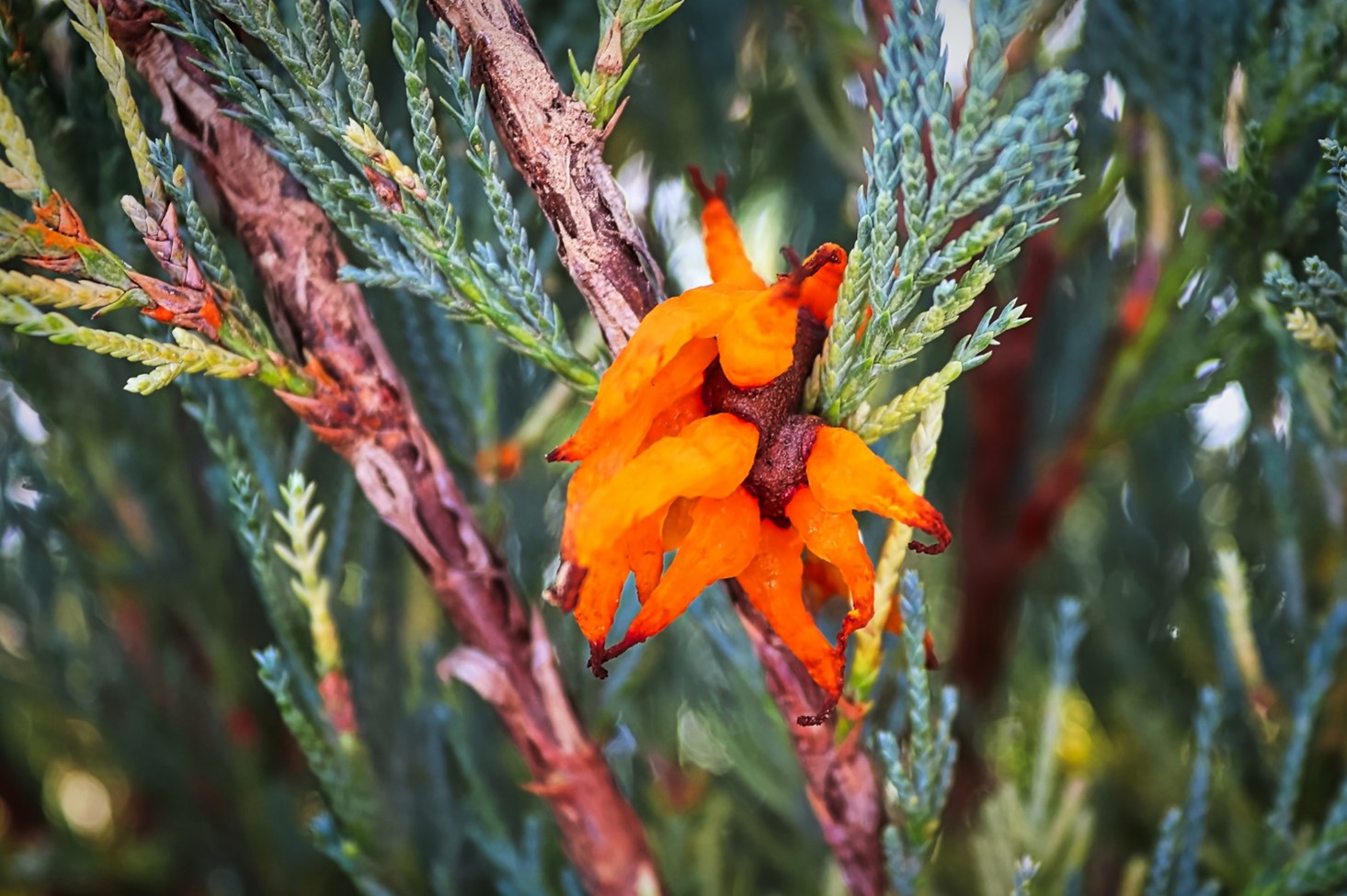Blog
Juniper-Hawthorn Rust: How to Control and Treat It

Plant diseases show their faces in a variety of ways, some stranger than others. Have you noticed orange, jelly-like balls growing on your juniper branches? Consider the disease, juniper-hawthorn rust, also known as cedar-apple rust. The fungus that causes this disease will produce orange jelly-like balls on juniper branches. This orange gelatinous material, which contains thousands of spores, oozes out of chocolate-coloured galls present on affected branches. Spores are then carried by the wind to the pathogen’s alternate host. That’s where the hawthorn or apple comes in. Here’s what you need to know about preventing and treating this fungal disease.
What is Juniper-Hawthorn Rust?
Juniper-hawthorn rust, or cedar-hawthorn rust, is a disfiguring disease caused by a fungal pathogen called Gymnosporangium globosum. The disease requires two hosts to complete its life cycle, most commonly juniper (cedar) and hawthorn, as the name suggests. However, they can also infect apples, crab apple trees, mountain ash and other alternate hosts. Rust disease is extremely prolific during wet years.
The disease cycle takes two years to complete. The pathogen matures for 18 to 20 months on juniper and then 4 to 6 months on hawthorn.
As the pathogen matures, orange, jelly-like balls appear on the juniper branches in late fall. This gelatinous material contains thousands of fungal spores that are carried by the wind, infecting nearby hawthorns. The pathogen then produces fungal spores on the hawthorn leaves that are blown back to the juniper in late summer, starting the cycle over again.
Symptoms Of Juniper-Hawthorn Rust
Symptoms on the primary host, juniper, look very different from those on the alternate host, hawthorn. Initially, infected juniper foliage shows no signs of infection. Over time, the tree will develop brown, kidney-shaped balls, called galls, on the upper or inner foliage, which grow to about 3 to 12 millimetres in diameter. Eventually, large masses of orange, jelly-like tendrils will sprout from the galls.
Symptoms on the hawthorn appear on the upper surface of leaves as small, greenish-yellow spots. The spots gradually get bigger and turn an orangish-yellow colour surrounded by concentric, red bands. Eventually, brownish tube-shaped structures form directly above the spots.
Damage Caused by Juniper-Hawthorn Rust
Rust disease usually only causes minor damage, like premature leaf drop. However, repeated infections can cause severe dieback. This defoliation can cause the plant to suffer winter injury, which can eventually cause it to wither and die. Moreover, if the fungus infects a fruiting tree, the fruit may be deformed or not develop at all.
How to Control Juniper-Hawthorn Rust
Juniper-hawthorn rust depends on two hosts to complete its life cycle. Therefore, the best prevention method is to keep the hosts as far away as possible from each other. Spores from juniper galls can infect hawthorns over 90 metres away. There have even been cases of hawthorns being infected as far as eight kilometres away.
If the juniper has already started to sprout galls, remove them in late winter or early spring before the gelatinous spores emerge. The best way to do this is to prune the branches about 10 to 15 centimetres below the galls. Make sure to disinfect your pruning shears so you don’t spread the infection.
Fungicide sprays also are available but are typically not necessary to help get rid of juniper fungus.
Tree Care Services in Western Canada
Do you suspect the junipers or hawthorns in your yard are infected by rust? The ArborCare® team can help. Our arborists provide various plant management and tree maintenance services for residential and commercial customers in Calgary, Edmonton, Kelowna and Winnipeg. We’ll diagnose the issue and devise a plan to extend the life of your trees, whether through tree removal, restorative pruning or foliage sprays. Contact us today to speak with a tree expert.
 1-877-444-8733
1-877-444-8733